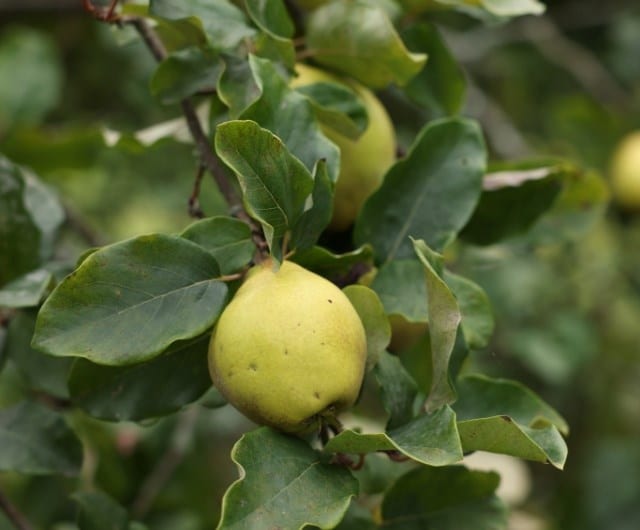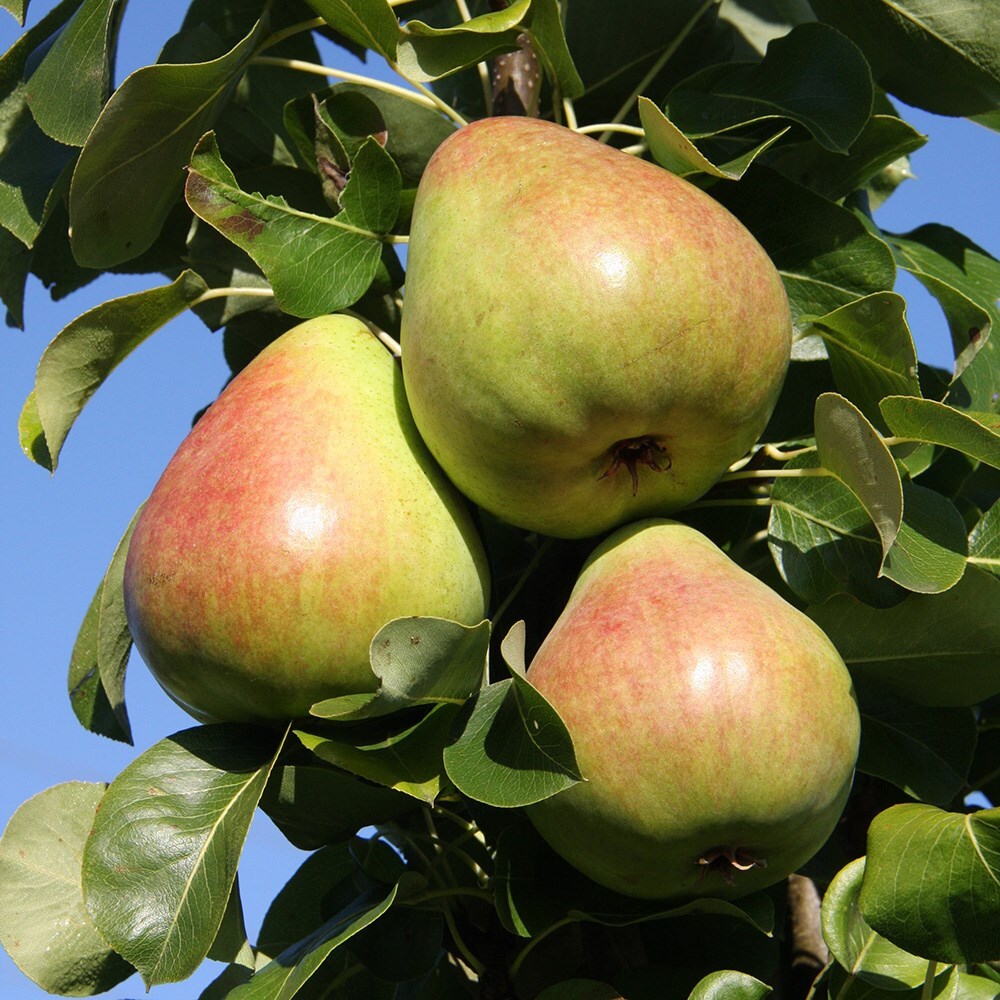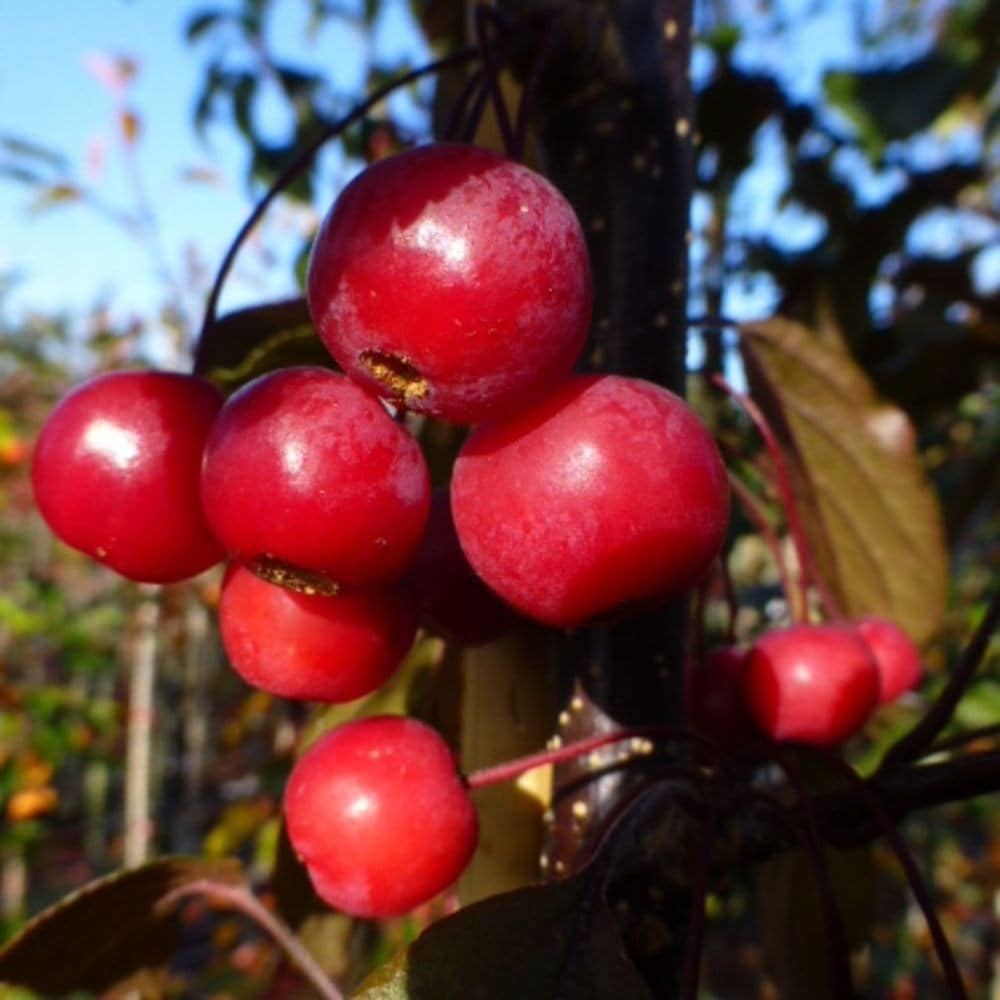How to choose the right fruit tree
Finding the right fruit tree for your space can be tricky, especially if you desire a small one. By simplifying the terms, we've made it easier for you to find the perfect fruit tree. Whether you want the best dwarf cherry tree or a large apple tree, we have everything you need.
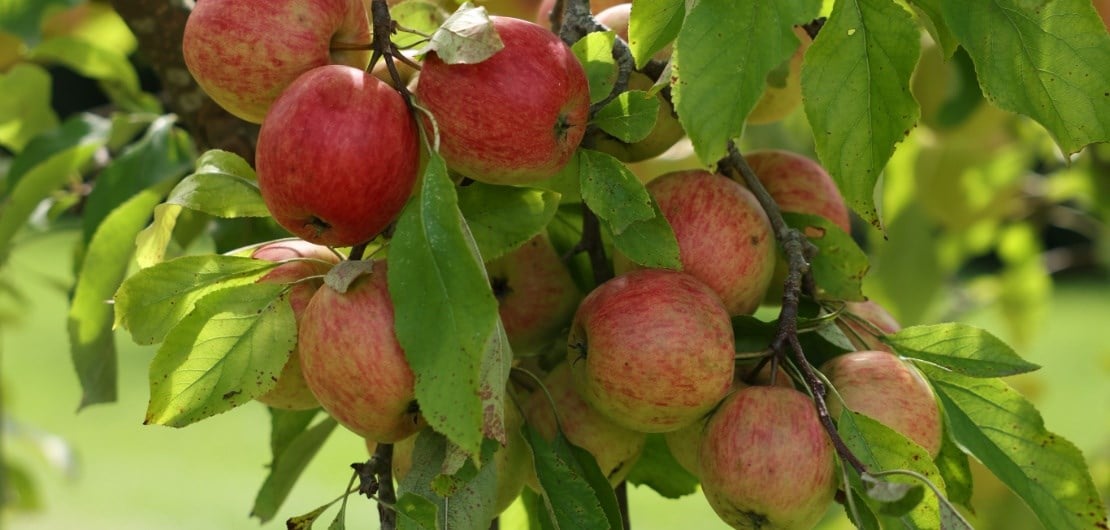
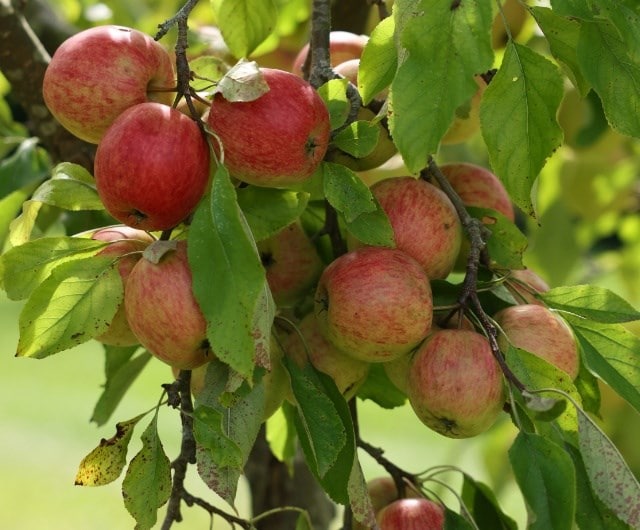
What is rootstock?
Many trees grown for fruit production are grafted, joining together two plants to create a hybrid. The rootstock is the root system of the trees' stem, and the fruiting part of the tree (the scion) is grafted onto that rooted stem to grow a new tree. Gardeners choose rootstocks based on growth speed and size, while the scion determines fruit type, flavour and harvest time.
Which rootstock is right for me?
Keeping in mind that the rootstock will determine the trees' eventual size and vigour, the following guide should help you find the best option for your garden or patio.
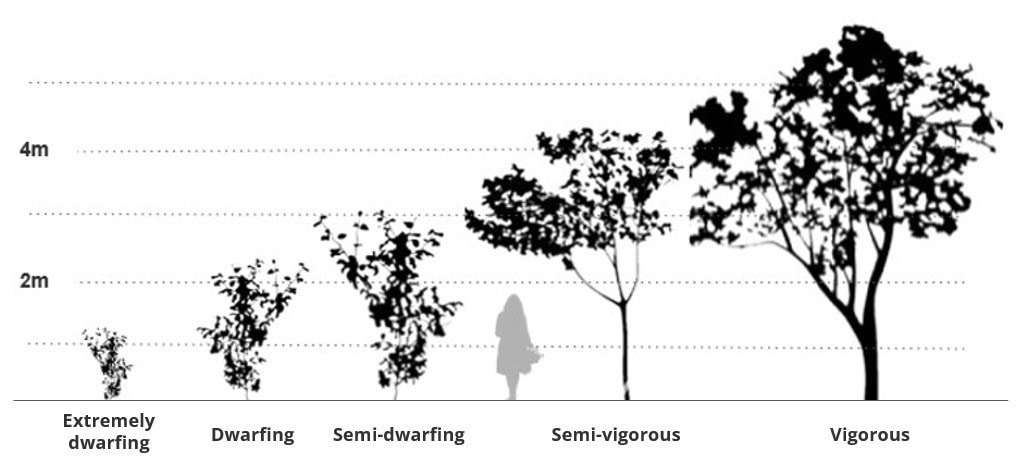

Extremely dwarfing: Suitable for patio tubs, step-over apples, and restricted areas. Very little pruning needed and often fruits in its first year. Height: 1.2 m- 2 m & spacing 1.2 m- 1.5 m. Extremely dwarfing rootstocks include M27.
Dwarfing: Offering good growth control and high productivity, trees on this rootstock require some support due to their abundant yields and notably good fruit size. Height 2.4 m- 3 m & spacing 2.4 m- 3.6 m. Dwarfing rootstocks include M26 & Pixy.
Semi-dwarfing: Perfect for bush trees, cordons, or fan-trained wall specimens. The optimal choice for those wanting compact, free-standing trees where good soil is present. Height 2.5 m- 4 m & spacing 2.5 m- 4 m. Semi-dwarfing rootstocks include Gisela 5/G5, MM106, MM116, Quince Eline/QE, VVA-1 & Mont Clare.
Semi-vigorous: Larger, robust, and often disease-resistant tree forms suitable for fan training on larger walls or orchards. Copes better on sites with poorer soils and requires consistent pruning. Height 3 m- 5 m & spacing 3 m- 5 m. Semi-vigorous rootstocks include Colt, Quince A/QA, Wavit & St Julien A/SJA.
Vigorous: Larger trees typically grown for orchards or those requiring additional vigour to cope with poorer and heavier soils. Myrobalan is also used for hedging, where density and speed of growth are paramount. Height 5 m- 6 m & spacing 5 m- 6 m. Vigorous rootstocks include Myrobalan, Pyrus & MM111.
Small fruit trees for UK gardens
No matter how small your garden, patio or balcony, it's still possible to grow dwarfing and extremely dwarfing fruiting trees in large pots, provided they are kept well fed and watered. Even semi-dwarfing rootstock can be trained and formatively pruned to be more compact in size.
Apples and pears grafted onto M26, M27 or Quince A rootstock are popular options, particularly the 'family' trees that produce several different varieties on each plant. Alternatively, opt for one of those varieties that don't need a pollination partner to bear fruit. If space allows and you're after a medium sized cherry tree, both 'Stella' and 'Sunburst' grafted onto Gisella 5 (G5) are excellent options. Modestly sized and self-fertile, they'll start producing fruit on quite young trees.
In sheltered gardens, a plum tree grafted onto VVA-1 rootstock is a lovely choice, but be aware that late frosts can harm productivity, so keep them in a frost-free spot or cover them with horticultural fleece when they come into bud. 'Victoria' is a prolific, reliable and self-fertile variety with large, succulent fruits that are delicious eaten straight off the tree. If however you love to make jam, choose a dessert variety such as 'Opal'.
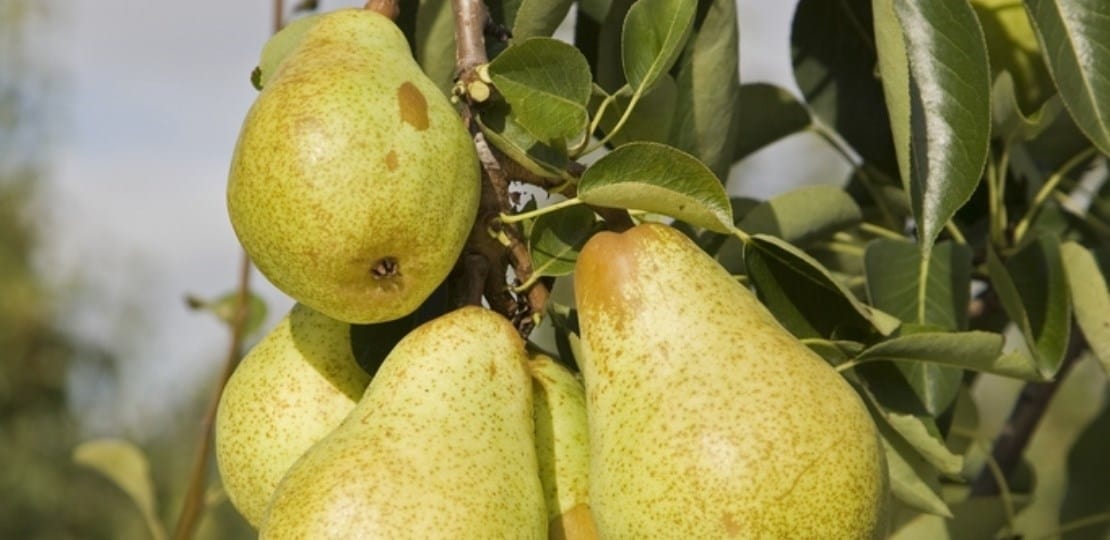
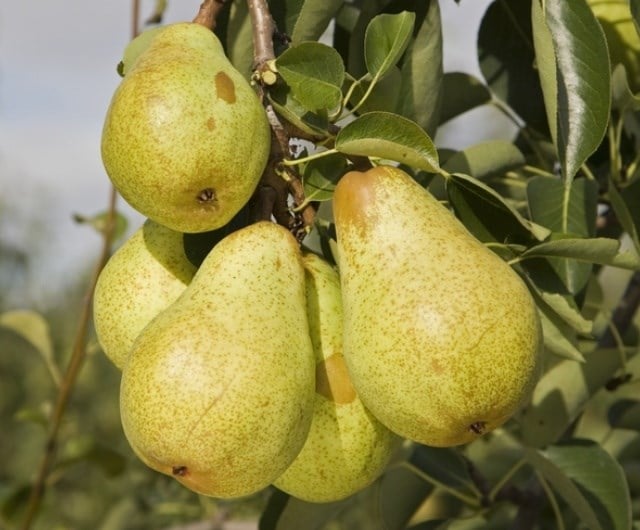
Bare root trees
Bare root fruit trees are a great option for the more budget-conscious gardener. We dig up bare root plants at the right time from fields and they arrive during the dormant period. In the spring, they will awaken and start putting on growth to sometimes produce fruit the same year.
How to plant bare root trees
Planting bare root trees is straightforward, but you should do it as soon as they arrive. If you're struggling to find the time, order a container plant that you can keep for longer before planting.
Follow these simple steps to plant your fruit tree.
- Unwrap the roots from their packaging as soon as they arrive. The roots need air to stay alive, so it's important to get them unwrapped.
- When you're ready to plant, soak the roots in a bucket for an hour to soak up water. You want the roots to be nice and plump for planting.
- Choose the perfect spot. The winter will bring bare roots, so the ground might freeze or become wet. If the best place is frozen or waterlogged, you can choose a corner in your garden to temporarily plant them. Dig a rough trench, place the roots in and cover loosely with soil.
- If the ground is in good condition, dig a hole wider than you think and a little shallower than the roots. You're aiming to spread the roots sideways but to only plant as deep as the tree was originally in the ground.
- Our plant doctor, Helen, recommends not adding anything to the hole. The theory is that if you do it will encourage roots to stay in their place rather than spreading to look for nutrients. If the soil is generally poor, add lots of well-rotted manure.
- Spread the roots out so they fill the hole comfortably. Cover with soil while holding the stem upright. You want to work the soil around the roots to avoid air pockets.
- Replant up to the original planting depth of the plant. You'll be able to see this where the stem becomes pale.
- Finish up by giving everything a good water and sprinkle the area with a slow-release fertiliser. Some fruit will come this year, but stay patient, and you will soon be eating bowlfuls of delicious fruit.



